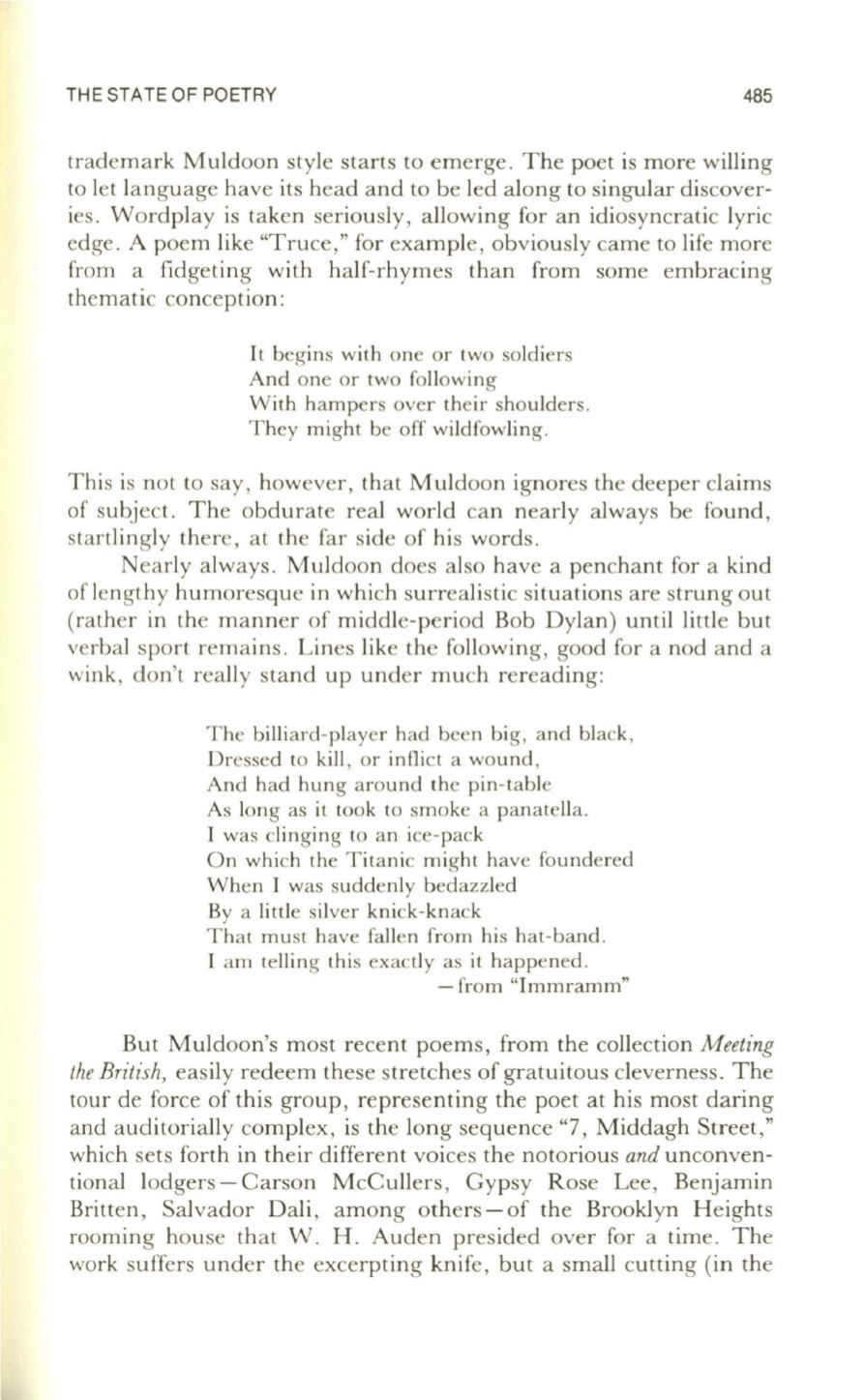
THE STATE OF POETRY
485
trademark Muldoon style starts to emerge. The poet is more willing
to let language have its head and to be led along to singular discover–
ies. Wordplay is taken seriously, allowing for an idiosyncratic lyric
edge. A poem like "Truce," for example, obviously came to life more
from a fidgeting with half-rhymes than from some embracing
thematic conception:
It begins with one or two soldiers
And one or two following
With hampers over their shoulders.
They might be off wildfowling.
This is not to say, however, that Muldoon ignores the deeper claims
of subject. The obdurate real world can nearly always be found,
startlingly there, at the far side of his words.
Nearly always. Muldoon does also have a penchant for a kind
of lengthy humoresque in which surrealistic situations are strung out
(rather in the manner of middle-period Bob Dylan) until little but
verbal sport remains. Lines like the following, good for a nod and a
wink, don't really stand up under much rereading:
The billiard-player had been big, and black ,
Dressed to kill , or innict a wound ,
And had hung around the pin-table
As long as it took to smoke a panatella.
I was clinging to an ice-pack
On which the Titanic might have foundered
When I was suddenly bedazzled
By a little silver knick-knack
That must have fall en from his hat-band.
I am telling this exactly as it happened.
- from "Immramm"
But Muldoon's most recent poems, from the collection
Meeting
the British,
easily redeem these stretches of gratuitous cleverness. The
tour de force of this group, representing the poet at his most daring
and auditorially complex, is the long sequence "7, Middagh Street,"
which sets forth in their different voices the notorious
and
unconven–
tional lodgers - Carson McCullers , Gypsy Rose Lee , Benjamin
Britten, Salvador Dali, among others-of the Brooklyn Heights
rooming house that W. H. Auden presided over for a time. The
work suffers under the excerpting knife, but a small cutting (in the


